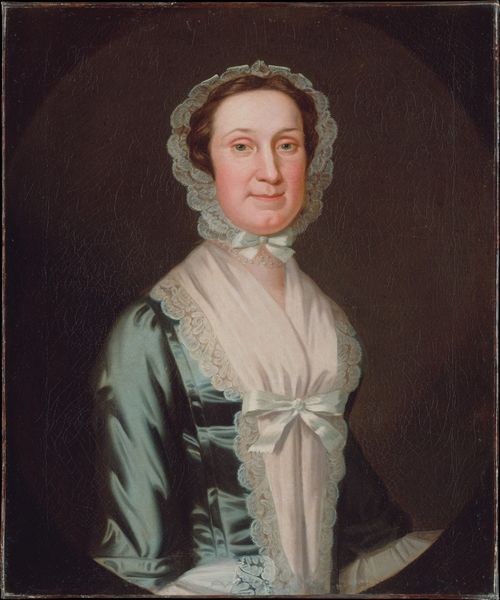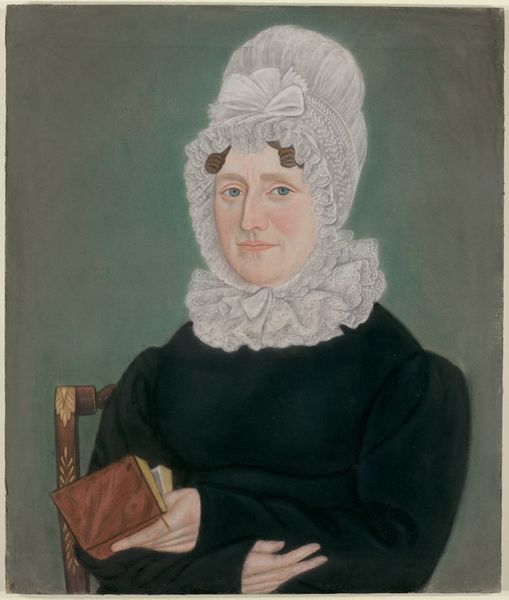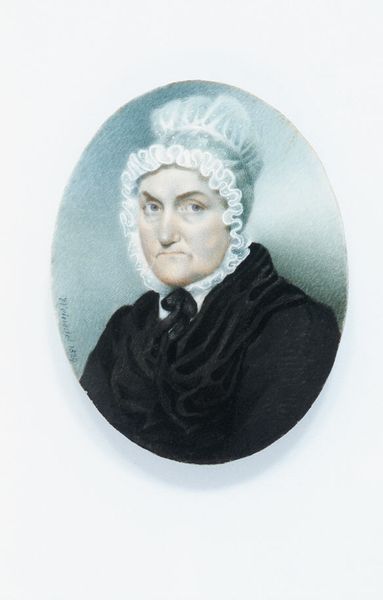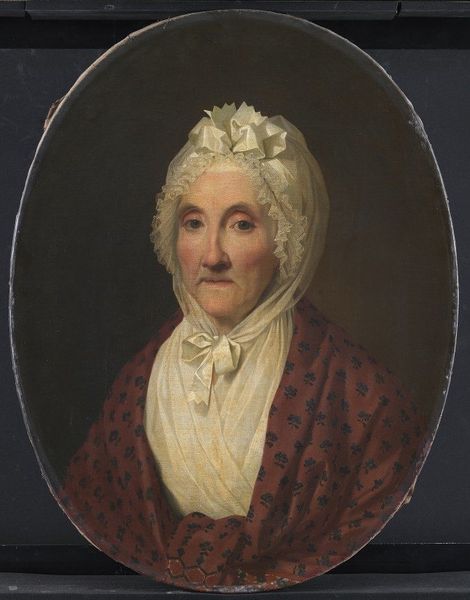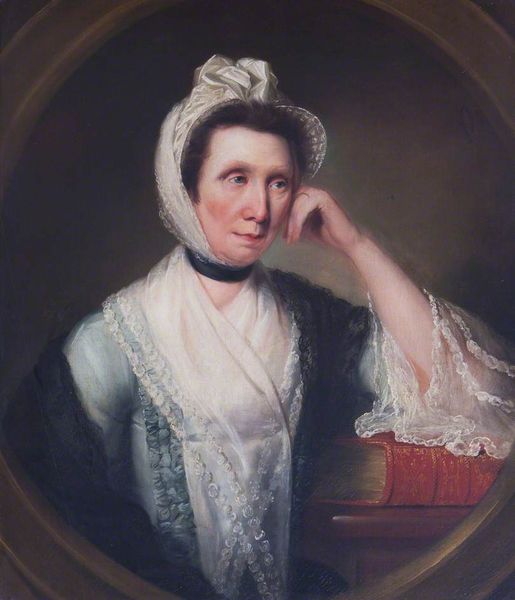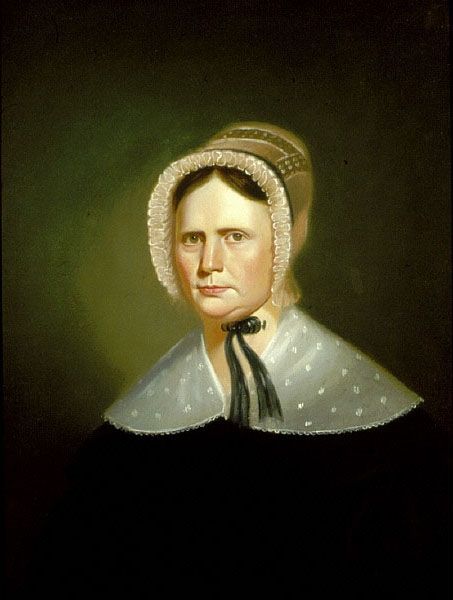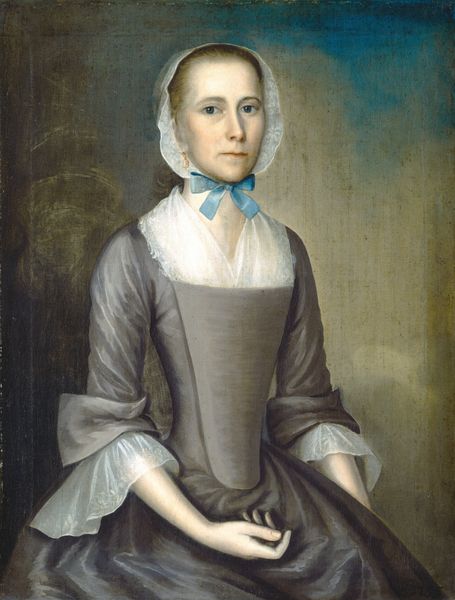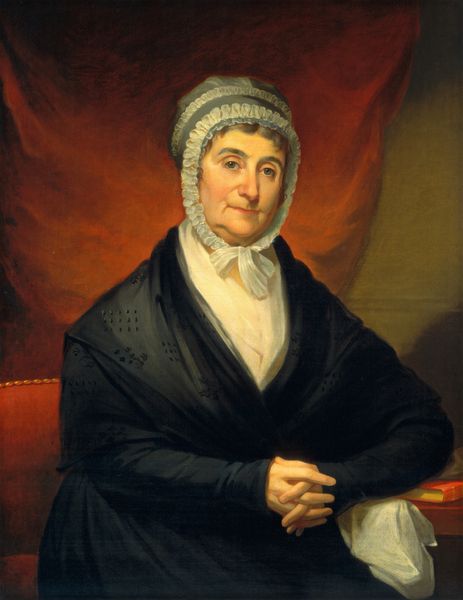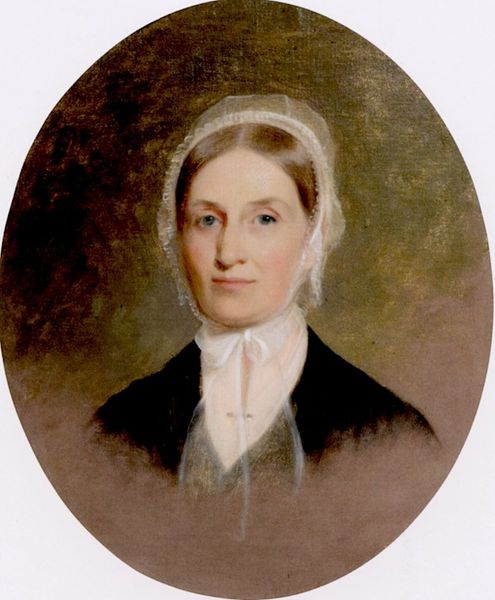
painting, oil-paint
#
portrait
#
painting
#
oil-paint
#
romanticism
#
miniature
Dimensions: 2 1/4 x 1 3/4 in. (5.6 x 4.2 cm)
Copyright: Public Domain
Curator: Alright, let's immerse ourselves in this one. Editor: Here we have William Verstille’s oil painting, "Mrs. Joseph White (Elizabeth Stone)" from 1802, currently housed at the Met. My first impression is how delicate it feels, like a faded dream captured on canvas, especially with that muted color palette. What strikes you most about it? Curator: It's interesting you say that. Dreams are often portals, aren't they? What catches my eye is the intimacy. Miniature portraits like these weren't just pretty baubles. Think of them as tangible tokens of affection and remembrance. They were like holding a piece of a loved one close, almost a precursor to the wallet-sized photos we carry now. But what do you make of her gaze, the woman in the portrait? Does it reveal something to you? Editor: She has this direct, unwavering gaze. A quiet confidence, perhaps? Almost like she's challenging us to see beyond the surface. Curator: Exactly! And don’t be fooled by the seemingly subdued colors and composition. Consider the historical context. The Romantic period valued emotion and individualism. Verstille wasn’t just painting a face, he was capturing a spirit, a sense of self in a rapidly changing world. It feels like we have just entered a period drama set. Editor: So, it’s more than just a pretty face in a bonnet. Curator: Oh, most definitely. These miniatures, while small in scale, have vastness of feelings hidden inside. Each tiny brushstroke was laden with intent and symbolism. They remind us that even the smallest objects can carry the weight of history and human connection. The challenge as viewers is to perceive more than what's superficially presented. Editor: This really reframes how I see these older pieces, I never considered the deeper context behind them! Curator: Indeed, that's where the real magic often resides!
Comments
No comments
Be the first to comment and join the conversation on the ultimate creative platform.
